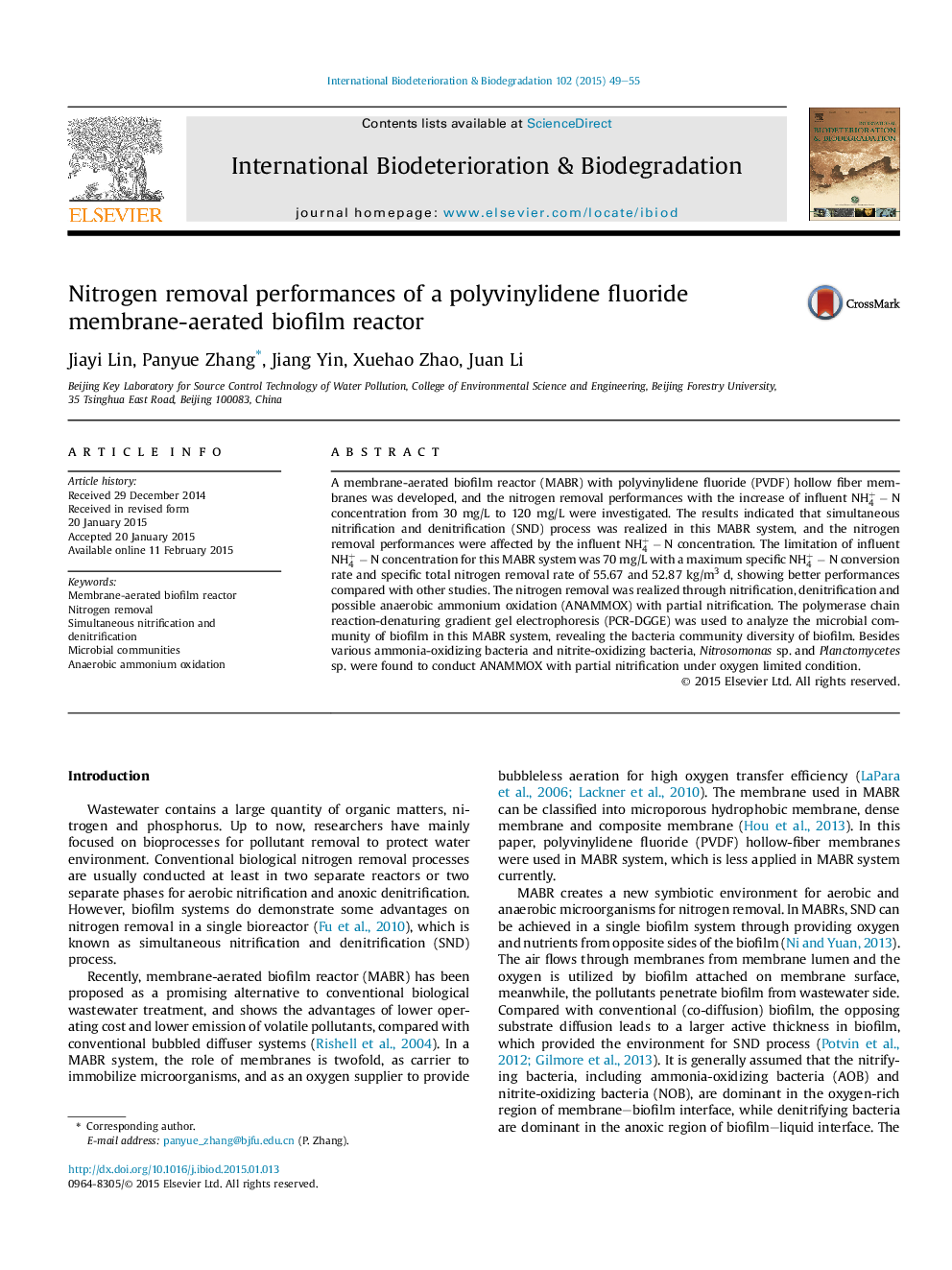| Article ID | Journal | Published Year | Pages | File Type |
|---|---|---|---|---|
| 4364348 | International Biodeterioration & Biodegradation | 2015 | 7 Pages |
•A membrane-aerated biofilm reactor (MABR) for nitrogen removal was studied.•Simultaneous nitrification and denitrification was realized in MABR.•Maximum specific total nitrogen removal of 52.87 kg/m3·d was achieved.•Bacterial community diversity of biofilm in MABR was formed.•Anaerobic ammonium oxidation with partial nitrification was observed in MABR.
A membrane-aerated biofilm reactor (MABR) with polyvinylidene fluoride (PVDF) hollow fiber membranes was developed, and the nitrogen removal performances with the increase of influent NH4+−N concentration from 30 mg/L to 120 mg/L were investigated. The results indicated that simultaneous nitrification and denitrification (SND) process was realized in this MABR system, and the nitrogen removal performances were affected by the influent NH4+−N concentration. The limitation of influent NH4+−N concentration for this MABR system was 70 mg/L with a maximum specific NH4+−N conversion rate and specific total nitrogen removal rate of 55.67 and 52.87 kg/m3 d, showing better performances compared with other studies. The nitrogen removal was realized through nitrification, denitrification and possible anaerobic ammonium oxidation (ANAMMOX) with partial nitrification. The polymerase chain reaction-denaturing gradient gel electrophoresis (PCR-DGGE) was used to analyze the microbial community of biofilm in this MABR system, revealing the bacteria community diversity of biofilm. Besides various ammonia-oxidizing bacteria and nitrite-oxidizing bacteria, Nitrosomonas sp. and Planctomycetes sp. were found to conduct ANAMMOX with partial nitrification under oxygen limited condition.
